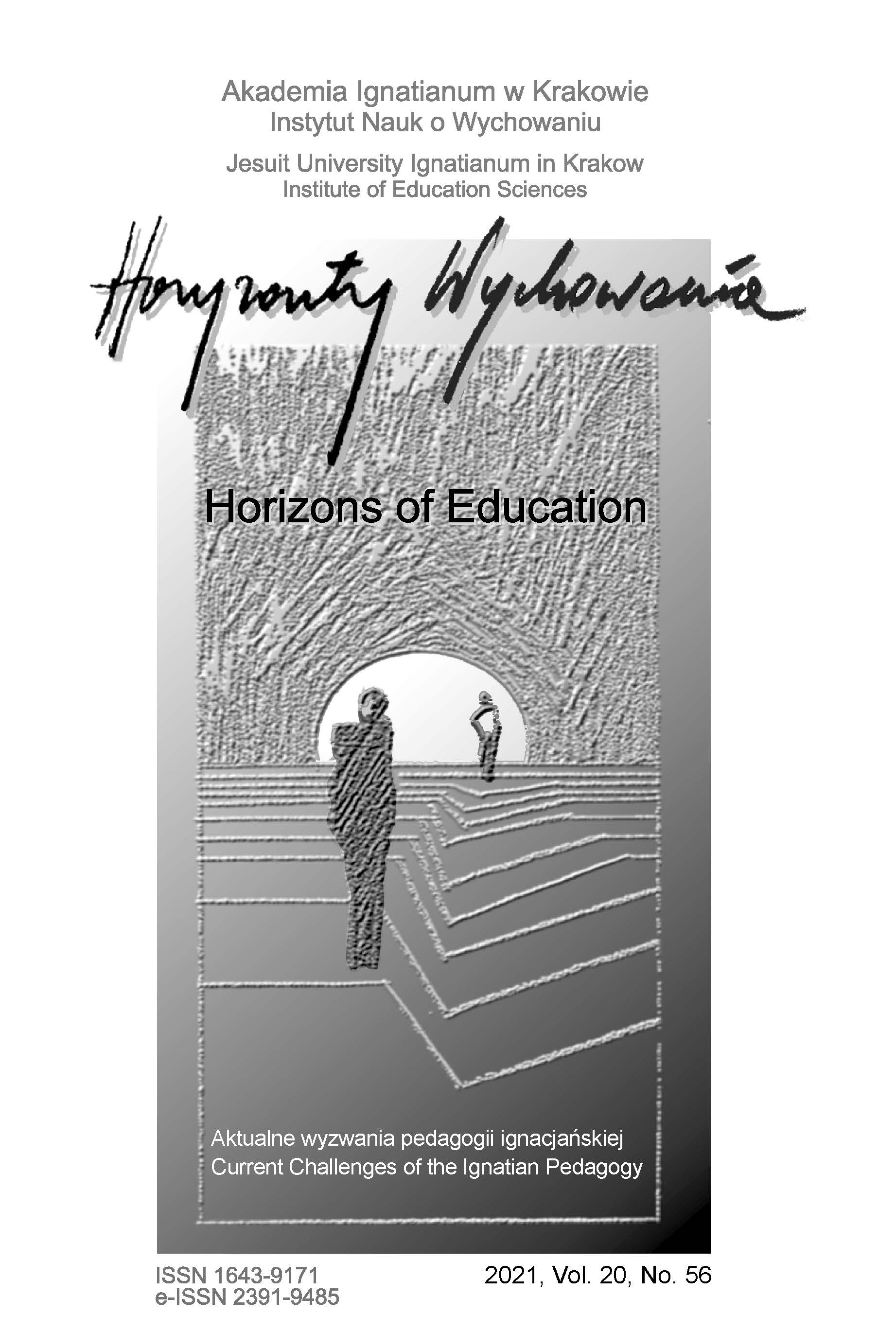Ignatian Pedagogy and Its Religious Inspirations
Abstract
Research Objective: The aim of this article is to shed light on the religious inspirations that underpin Ignatian Pedagogy.
The research problem and methods:The research problems involve questions concerning the most important ideas of Ignatian spirituality, which are based on the existential experience of St. Ignatius Loyola, and which are a source of inspiration for Ignatian Pedagogy. Based on the literature, the fundamental ideas of Ignatian Spirituality and their influence on the emergence and development of Ignatian Pedagogy were analysed.
The process of argumentation:Starting from the historical stages of the formation of the key elements of Jesuit spirituality, the key moments of the spiritual experience of St Ignatius of Loyola are shown. The interpretation of the tenets of the Ignatian tradition and its spirituality made it possible to identify the vital ideas that constitute the sources of Ignatian Pedagogy.
Research results:The analysis leads to the conclusion that the modern concept of education should be built on the proper concept of the human being. One of the proposals is the concept of a person that we find in Ignatian Pedagogy. It is inspired by Ignatian Spirituality and describes humanity in the perspective of God’s creative act and His love. In this context, the issues of individuality and freedom of each person are especially important.
Conclusions, innovations and recommendations: Human existence in the changing and globalised world means a constant need to respond to change. Therefore, education should be understood as the familiarisation of students with change, which is a necessary condition for their development and thus for the progress of society. The Ignatian Pedagogy is effective in this regard, as it assumes an all-round development of a person and involves another person, an educator/mentor, who acts as a kind of witness to the ongoing history of life.
References
Arrupe, P. (1981). Relevance of the society and its apostolate in the world of today. In: J. Aixala (ed.), Jesuit apostolates today (pp. 15-24). Anand Press.
Charchuła, J. (2020). Institutionalization of science and the social functions of the university – difficulties and opportunities. The Modern Higher Education Review, 5, 50-61.
Chubbuck, S. (2007). Socially just teaching and the complementarity of Ignatian pedagogy and critical pedagogy. Christian Higher Education, 6(3), 239-265.
Giroux, H.A. (1988). Teachers as intellectuals: Toward a critical pedagogy of learning. Bergin and Garvey.
Giroux, H.A. (2004). Critical pedagogy and the postmodern/modern divide: Towards a pedagogy of democratization. Teacher Education Quarterly, 31(1), 132-153.
International Commission on the Apostolate of Jesuit Education (ICAJE). (1993). Ignatian pedagogy: A practical approach. http://jesuitinstitute.org/Pages/IgnatianPedagogy.htm
Ivens, M. (1998). Understanding the Spiritual Exercises. Gracewing Publishing.
Johnson, W.B. (2002). The intentional mentor: Strategies and guidelines for the practice of mentoring. Professional Psychology: Research and Practice, 33(1), 78-90.
Lindholm, J.A. (2008). Spirituality and pedagogy: Faculty’s spirituality and use of student-centered approaches to indergraduate teaching. Review of Higher Education, 31(2), 185-207.
Massey, D.W. (2010). Applying the Ignatian pedagogical paradigm to the creation of an accounting ethics course. Journal of Business Ethics, 96, 453-465.
Meissner, W. (1992). Ignatius of Loyola: The psychology of a saint. Yale University Press.
Oakes, J. (2013). In Ignatian footsteps: Translational learning for educating and training adults in the 21st century. Jesuit Higher Education: A Journal, 2(2), 41-53.
O’Donnell, J.A. (1984). The Jesuit Ratio studiorum. Philippine Studies, 32(4), 462-475.
Copyright (c) 2021 HORIZONS OF EDUCATION

This work is licensed under a Creative Commons Attribution-NoDerivatives 4.0 International License.
Authors who publish in this journal agree to the following terms:
- Authors retain the copyright to their work while granting the journal the right of first publication. The work will be simultaneously licensed under a CC BY-ND license, which permits others to share the work with proper credit given to the author and the original publication in this journal.
- Authors may enter into additional, non-exclusive agreements for the distribution of the published version of the work (e.g., posting it in an institutional repository or publishing it in another journal), provided that the original publication in this journal is acknowledged.
We allow and encourage authors to share their work online (e.g., in institutional repositories or on personal websites) both before and during the submission process, as this can foster beneficial exchanges and lead to earlier and increased citations of the published work. (See The Effect of Open Access). We recommend using any of the following academic networking platforms:





